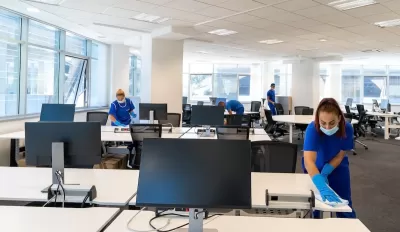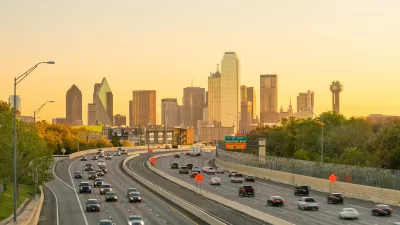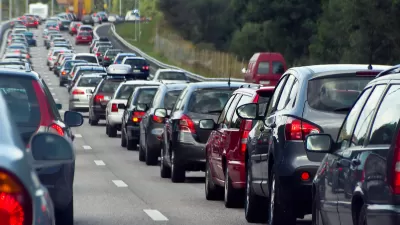The number of Americans who work from home rose sharply during the pandemic and remains high, posing important questions about the future of transportation and housing.

In a piece for Bloomberg CityLab, David Zipper outlines key ways that the rapid shift to remote work during and after the Covid-19 pandemic has altered U.S. cities.
Transit ridership has dropped and rush-hour gridlock has softened, while mid-day traffic has grown. Population patterns shifted as “Zoom towns” outside of major cities swelled with digital nomads who abandoned big-city business districts where highways and transit lines historically converge.
While some companies are taking a stricter stance on returning to the office, many workers are happy to keep working from home, making downtown offices largely obsolete. According to researcher Patricia Mokhtarian, who predicts that the remote work rate will continue to hover around 15 percent of U.S. workers, Covid has had a much longer-lasting impact on telework than prior disruptive events she’s studied, in part because new technologies allow more people to effectively do their jobs from outside the office.
Mokhtarian notes that while remote work can reduce vehicle miles traveled (VMT), its impacts on transit and air travel are less clear. “[I]t’s possible that people working from home are moving further outside the city. That can reduce transit use, and they might buy bigger homes that have more embedded carbon and require more energy to heat and cool.”
FULL STORY: Will Americans Ever Lose Their Taste for Telework?

Planetizen Federal Action Tracker
A weekly monitor of how Trump’s orders and actions are impacting planners and planning in America.

Canada vs. Kamala: Whose Liberal Housing Platform Comes Out on Top?
As Canada votes for a new Prime Minister, what can America learn from the leading liberal candidate of its neighbor to the north?

The Five Most-Changed American Cities
A ranking of population change, home values, and jobs highlights the nation’s most dynamic and most stagnant regions.

San Diego Adopts First Mobility Master Plan
The plan provides a comprehensive framework for making San Diego’s transportation network more multimodal, accessible, and sustainable.

Housing, Supportive Service Providers Brace for Federal Cuts
Organizations that provide housing assistance are tightening their purse strings and making plans for maintaining operations if federal funding dries up.

Op-Ed: Why an Effective Passenger Rail Network Needs Government Involvement
An outdated rail network that privileges freight won’t be fixed by privatizing Amtrak.
Urban Design for Planners 1: Software Tools
This six-course series explores essential urban design concepts using open source software and equips planners with the tools they need to participate fully in the urban design process.
Planning for Universal Design
Learn the tools for implementing Universal Design in planning regulations.
Village of Glen Ellyn
Central Transportation Planning Staff/Boston Region MPO
Heyer Gruel & Associates PA
Institute for Housing and Urban Development Studies (IHS)
City of Grandview
Harvard GSD Executive Education
Regional Transportation Commission of Southern Nevada
Toledo-Lucas County Plan Commissions





























